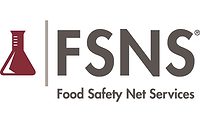Cyclospora Outbreak Tops 400 Cases; Louisiana Joins Affected States List
The number of people sickened in a multistate Cyclospora outbreak pushed past 400 on August 1, at least unofficially, as the Centers for Disease Control and Prevention (CDC) reported 397 cases, and Iowa and Texas added another 22 cases to that figure. In addition, on August 1 Louisiana reported its first cases, raising the number of affected states to 16, according to the CDC.
The Texas Department of State Health Services (TDSHS) said 132 cases have been reported in the state so far, most of them in the Dallas and Fort Worth area. It said the cases may be related to the outbreak in Iowa and Nebraska, but so far no common source has been identified.
The CDC said that most of the illness onsets ranged from the middle of June through early July, and at least 22 people from five states have been hospitalized.
The Louisiana Department of Health and Hospitals (LDHH) today announced on Twitter that it confirmed two Cyclospora cases this week. The CDC included them in its count and noted that one of infections was likely acquired out of state.
The CDC said it isn't clear yet if cases from all the states are part of the same outbreak. Iowa and Nebraska have linked their cases to a specific bagged salad mix, and the CDC said it is working with its federal and state partners to determine if illnesses in other states are related to the same source. Officials have not disclosed the product name or places where it was sold.
The Food and Drug Administration (FDA) said in an update today that the goal of the investigation is to combine information from Iowa and Nebraska with data from the rest of the affected states to identify a specific item. For trace-back investigations, the agency said it is prioritizing the ingredients that were part of the salad blend identified by Iowa and Nebraska, but it is following other leads as well.
The process is labor-intensive and requires collecting, reviewing, and analyzing hundreds and sometimes thousands of invoices and shipping documents, officials said.
The FDA said it has dedicated a team of 15 headquarters staff members to solve the outbreak — more than double the number announced earlier in the week. The agency has asked its field offices to review and forward consumer complaints that might be Cyclospora-related, which could supplement epidemiologic information collected by the CDC and the states.
The FDA also said that analyzing consumer complaints might provide opportunities to collect product samples. So far no product testing results are available, and health officials in Iowa have said the ingredients have a short shelf life and that the potentially tainted products are no longer in the state's food supply.
In other developments, two officials from the Iowa Department of Public Health (IDPH) on August 1 reported that electronic communications and social media tools allowed them quickly warn providers and the public about the outbreak, which was helpful for detecting additional cases. They described their experience in a "notes from the field" item in today's issue of Morbidity and Mortality Weekly Report (MMWR).
The officials said the news media picked up on the announcement of the first two Cyclospora cases, which were included in a June 28 edition of the IDPH's weekly epidemiology update. IDPH officials noted that within a few days, four more cases were reported, and it became clear that an outbreak was under way — which prompted more electronic alerts from the IDPH and the CDC.
By then, most major media outlets in Iowa had reported on the outbreak. The IDPH followed up with Twitter messages and a press release sent to nearly 400 members of the news media.
In June, before the messaging push, the state laboratory had 271 requests for parasite and ova testing, with none specifically asking about Cyclospora. During the first 23 days of July, requests for general stool tests rose to 762, with specific Cyclospora testing requested for 1,460 samples, according to the report.
The IDPH officials said the increased public attention improved diagnosis and treatment. For example, a patient who had been hospitalized for five days with severe vomiting and diarrhea relapsed, but then improved after a health provider saw the epidemiologic alert and instituted appropriate treatment.
See also:
Aug 1 IDPH outbreak update
Aug 1 TDSHS outbreak update
Aug 1 CDC outbreak update
LDHH Twitter feed
Aug 1 FDA update
Aug 2 MMWR report
Looking for a reprint of this article?
From high-res PDFs to custom plaques, order your copy today!





